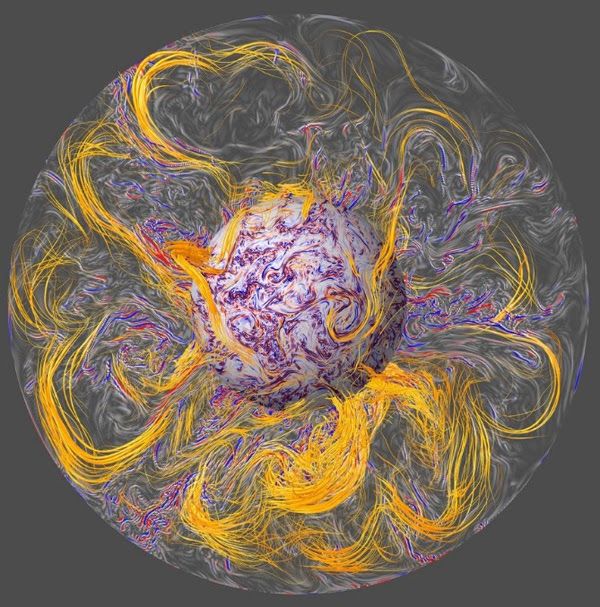
In January, scientists announced Earth's magnetic field was moving quickly and in an unexpected way—traveling from Canada toward Siberia faster than it should have—and no one knew exactly why.
The sudden change in the position of the magnetic north pole meant scientists at the National Oceanic and Atmospheric Administration had to do an unscheduled update to the World Magnetic Map model—the system used across the globe to ensure the accuracy of positioning in systems like GPS and aircraft navigation.
The magnetic north pole is always on the move, but the shift of its position is generally quite steady. The unexpected change could be related to a strange phenomenon known as "geomagnetic jerks." First discovered in 1978, these jerks are characterized by the magnetic field abruptly and unexpectedly accelerating at fairly random intervals.
In a study published in the journal Nature Geology, researchers have now found the cause of geomagnetic jerks, solving the 40-year mystery.
Earth's magnetic field is produced by the planet's metallic core. Movements within the core cause variations to the field. This could be slow convection over long time scales, or "rapid" hydromagnetic waves that can be seen over just a few years. The geomagnetic jerks are thought to result from the second type of movement.
Julien Aubert from France's CNRS and colleagues used supercomputers to create a model for the jerks. They re-created conditions thought to exist at Earth's core and then let the computer carry out what would be 4 million hours of calculations. From this, scientists were able to reproduce the conditions that take place before a geomagnetic jerk.
Findings showed the jerks arise when hydromagnetic waves are emitted in the inner core. The waves are amplified as they rise to the surface of the core, creating disturbances that fit with what we observe during geomagnetic jerks.
"The origin of jerks has been a riddle for geophysicists since their discovery 40 years ago," Aubert told Newsweek. "On theoretical, or more observational grounds, many mechanisms have been proposed during those years, involving other types of core motions or waves. In our opinion the strength of our proposal is that it relies on self-consistent computer simulations of the geodynamo, i.e., it solves the equations for motion and magnetic field generation that derive from the first principles of physics. So geomagnetic jerks are self-consistently generated in a framework requiring a minimal number of prior assumptions."
He said that one limitation of the paper is that their model does not necessarily fit with geomagnetic jerks recorded in earlier periods, like the one that took place in 1969, for example.
The current findings are part of a longer-term project in which scientists hope to predict the evolution of the geomagnetic field over the coming decades. This requires computer simulations like the one used in the latest study, Aubert said.
In terms of what the findings mean for the current movement of the magnetic north pole, he said a geomagnetic jerk in 2016 appears to have caused the shift in position. "As the paper shows, although the core flows at the origin of jerks are rather focalized at the surface of the core (1,800 miles beneath our feet), the magnetic perturbation that they give rise to at the surface of the Earth is rather widespread, and can affect the acceleration of the north magnetic pole, as recently observed," he said.
Uncommon Knowledge
Newsweek is committed to challenging conventional wisdom and finding connections in the search for common ground.
Newsweek is committed to challenging conventional wisdom and finding connections in the search for common ground.
About the writer
Hannah Osborne is Nesweek's Science Editor, based in London, UK. Hannah joined Newsweek in 2017 from IBTimes UK. She is ... Read more
To read how Newsweek uses AI as a newsroom tool, Click here.








